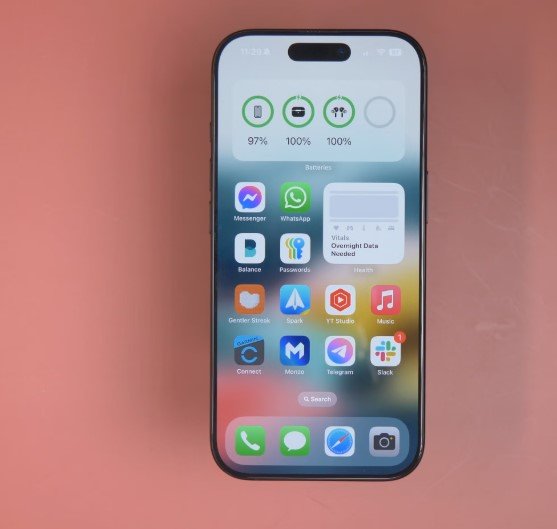Apple’s iPhone 17 lineup is shaping up to be one of its boldest moves in years, with a sleek new design and a fresh naming strategy likely to dominate headlines this fall.
Apple fans have grown used to the September buzz, but this year’s iPhone 17 lineup is already stealing attention well ahead of its launch. The reason? A new ultra-thin iPhone 17 “Air” model is reportedly on the cards — and it’s expected to bring one of the biggest design overhauls since the iPhone X.
Coupled with updates to the iPhone 17 Pro and possibly a shift in how Apple names and markets its flagship devices, this could be a pivotal moment for the world’s most valuable company.
A Slimmer iPhone? All Eyes on the ‘Air’
Whispers about a new “iPhone 17 Air” model aren’t just another round of idle tech gossip.
Industry analysts and leakers suggest this could be Apple’s thinnest phone yet — even thinner than the current iPhone 15 Pro Max. Apple is reportedly taking design cues from the iPad Air, hence the name, and looking to deliver a super-slim chassis without sacrificing performance.
One sentence: Apple’s obsession with design minimalism is entering a whole new phase.
Analysts believe this slim model could replace the Plus version, which has seen lukewarm reception. Apple might be aiming for a sleek, lighter phone with a large screen — but without the bulk. If it works, it could reset expectations across the entire industry.

What’s New Across the iPhone 17 Lineup?
We’re still a few months away from launch, but here’s what’s expected to land in the full iPhone 17 range:
-
iPhone 17: Standard model with minor tweaks, better battery, and updated chip.
-
iPhone 17 Pro: Rumored to feature a stronger titanium frame and new camera enhancements.
-
iPhone 17 Air: Ultra-thin, possibly 6.6-inch OLED display, and redesigned internals.
-
iPhone 17 Pro Max: Likely to be the first with under-display Face ID.
One of the biggest behind-the-scenes shifts? Apple could increase the base RAM on the Pro models to 12GB, aiming to keep up with the likes of Samsung and OnePlus on the multitasking front.
Another talking point: the Pro models may come with a new A19 Pro chip built on TSMC’s second-gen 3nm node, meaning more power with better battery efficiency.
Pricing Might Get a Shake-Up Too
Let’s talk numbers — because Apple’s never been shy about premium pricing.
Early rumors suggest that the iPhone 17 Air could come in somewhere between the standard and Pro models, possibly starting around $899 in the U.S. This puts it in a curious spot: more premium than the base model, but not quite Pro-tier.
Meanwhile, the iPhone 17 Pro might stick close to its predecessor’s $999 starting price. The Pro Max, depending on storage options and new features like under-display Face ID, could push well past $1,200 in some configurations.
Of course, none of this is confirmed — but it’s based on early supply chain reports and historical trends.
Design, Display, and a Touch of AI
Design always gets people talking. And this time, Apple may be ditching the old for something far sleeker.
The Air model is likely to come with a slimmer Dynamic Island cutout and lighter build. Some leaks suggest a shift to aluminum instead of titanium — not just for looks but also for shaving off extra grams.
Pro models, on the other hand, might stick to titanium frames but with refinements to the curved edges and camera bump. One sentence: They’ll look premium but also feel easier in the hand.
While Apple hasn’t said a word publicly yet, insiders believe iOS 18 — launching alongside the iPhone 17 — will integrate more on-device generative AI features. Think smarter Siri, better photo editing, and deeper automation. Apple’s late to the party here, but it’s trying to make a splash.
When’s the Launch? Mark Your Calendars
This is Apple. So yes — the launch window is probably mid-September.
Sources suggest a September 10–12 timeline for the keynote event, with preorders opening that same Friday. The actual shipping date? Around September 20, based on previous years.
There’s always a possibility of delays, especially with the rumored Air model. Apple’s slimmed-down design might pose production challenges — particularly around battery life and heat management. But right now, all signs point to a smooth rollout.
Some supply chain chatter hinted that display panels for the new lineup have already entered mass production, which is a good sign. Barring major snags, Apple’s September playbook seems intact.
